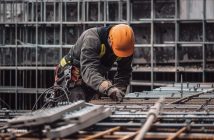When the time comes to repair or replace your roof, a detailed quotation becomes the foundation for your decision. A roofing quotation outlines the projected costs, materials, and labor involved in restoring or renewing one of the most critical structures of your home. Homeowners often find themselves navigating technical language, pricing structures, and material options that can make this process feel complex. By understanding what goes into a quotation and how each part contributes to the overall project, you can approach your roofing investment with greater confidence.

Understanding the Purpose of an Estimate
Before any roofing work begins, the process starts with an estimate. Homeowners often search for professional guidance to understand the range of services available, and it is at this stage that they get a roof estimate from a qualified contractor. This document serves as a guide, offering an overview of the expected costs based on the current state of your roof, the chosen materials, and the labor required. Obtaining multiple estimates allows for comparison, giving you a sense of the market rate and helping you identify whether a quote appears too low or too high.
A clear and accurate estimate not only outlines the financial expectations but also helps both homeowner and contractor stay aligned on the project’s goals. When reviewing an estimate, pay attention to the clarity of the scope, the type of roofing materials proposed, and the timeline for completion. An estimate should provide enough detail to make you feel confident that the contractor understands your needs and that there will be no surprises later on.
The Key Components of a Roofing Quotation
A roofing quotation typically contains several core components that help clarify the project. The first section generally outlines the scope of work, defining whether the project involves minor repairs, full replacement, or inspection and maintenance. Each task should be listed in straightforward language, explaining exactly what will be done on the roof.
Next, the quotation should describe the roofing materials. This includes information about shingles, tiles, or metal panels, as well as underlayment and flashing materials. The grade and warranty of each product matter greatly, as these determine the durability and longevity of your roof. Contractors often include the brand and model of the materials so that you can research their quality and cost independently.
Materials, Labor, and Hidden Costs
Understanding how materials and labor affect your total cost is key to interpreting a quotation accurately. The type of material chosen has a major impact on both price and performance. Asphalt shingles are often the most cost-effective, while metal, tile, or slate roofs can significantly raise the price but provide longer lifespans and stronger weather resistance.
Labor costs vary depending on the roof’s complexity. A steeply pitched roof or one with multiple layers will require more time and specialized equipment, increasing labor charges. Roofing contractors also factor in safety precautions, insurance, and local permit fees, which can subtly influence the total figure.
The Importance of Warranties and Guarantees
A detailed quotation should always outline the warranties associated with the materials and workmanship. These warranties protect against defects, leaks, or installation errors that might arise after the job is complete. Material warranties are typically provided by manufacturers and may range from ten years to a lifetime, depending on the product chosen.
Workmanship warranties, on the other hand, come directly from the contractor. They guarantee the quality of installation for a specified period, often between one and ten years. When comparing quotations, pay attention to how these warranties are written. Some may cover only repairs, while others include full replacement of defective materials or labor.
Evaluating and Comparing Roofing Quotations

When you have received multiple quotations, take the time to compare them side by side. Look beyond the final price and analyze what each contractor offers for that cost. A lower quotation might seem appealing, but it could mean the use of inferior materials or less experienced labor. Conversely, a higher quotation might include more durable materials, comprehensive cleanup, or extended warranties that justify the added cost.
Consistency is another factor to examine. Reputable contractors provide detailed and professional documents that are easy to read and understand. Any vague or missing details, such as unclear material descriptions or ambiguous pricing terms, should raise questions. A responsible contractor should be willing to explain every line of the quotation and clarify how costs are calculated.
Preparing for the Roofing Project
Once you have selected a contractor based on a well-understood quotation, preparation becomes the next phase. The contractor will confirm the start date, project duration, and any preparatory steps the homeowner must take. This may involve clearing the driveway, moving outdoor furniture, or securing pets indoors. Communication at this stage sets the tone for a smooth and efficient project.
Confirm that the quotation includes post-project cleanup, debris removal, and disposal of old roofing materials. A professional contractor ensures the property is left in the same or better condition than before the work began. You should also clarify how payment will be handled. Reputable roofers usually request a deposit before work begins, with the balance paid upon completion and inspection. Avoid paying the full amount upfront, as this reduces leverage in case any issues arise.
By taking the time to review, question, and verify each aspect of the quotation, you safeguard your investment and ensure lasting protection for your home. The right contractor, backed by a clear and honest quotation, turns a potentially stressful project into a well-managed improvement that enhances comfort, safety, and long-term value.


